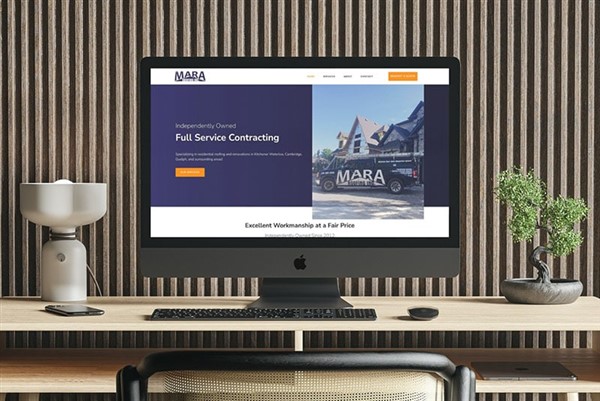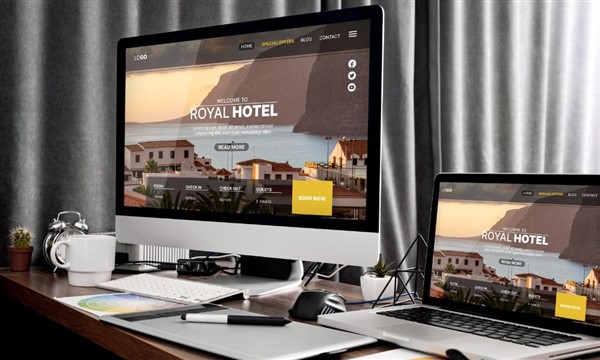Web Design Theory Nairobi Kenya
Understanding Web Design Theory Nairobi Kenya is crucial for crafting effective and engaging online experiences. In Nairobi’s dynamic digital landscape, businesses need websites that not only look good but also function flawlessly and resonate with their target audience. This article explores the core principles of web design theory, offering practical guidance and insights for creating websites that drive results in the Kenyan market. Whether you are a budding designer or a business owner, grasping these concepts will empower you to build a strong online presence.
Understanding the Fundamentals of Web Design Theory

Web design theory encompasses a range of principles that guide the creation of visually appealing and user-friendly websites. These principles include layout, color theory, typography, and user experience (UX) design. Moreover, understanding these elements and how they interact is essential for creating a cohesive and effective online presence. Good web design should not only be aesthetically pleasing but also functional, accessible, and aligned with the brand’s objectives. Let’s delve deeper into each of these key aspects.
The Importance of Layout and Composition
Layout and composition are fundamental to web design. A well-structured layout guides the user’s eye through the content, highlighting key information and creating a sense of balance. Principles like the rule of thirds, visual hierarchy, and white space play crucial roles in achieving an effective layout. Moreover, a cluttered or confusing layout can frustrate users and lead them to abandon the site. Consider how different elements are arranged to create a visually appealing and easy-to-navigate experience.
For example, a website for a coffee shop in Westlands, Nairobi, could use a grid-based layout to showcase its menu items and promotions. The use of whitespace around each item would make it easy for users to browse and select their desired products. Furthermore, a clear call-to-action button, such as “Order Now,” would guide users towards making a purchase.
- Use a grid-based system for a structured layout.
- Employ visual hierarchy to guide the user’s eye.
- Utilize whitespace to avoid clutter and improve readability.
Want to learn more about effective layout techniques? Explore our web design services.
Color Theory and Branding in Nairobi
Color plays a vital role in evoking emotions and conveying brand identity. Understanding color theory is essential for selecting a palette that resonates with your target audience and reinforces your brand message. In Nairobi, it’s important to consider cultural associations with different colors. For example, vibrant colors are often associated with energy and excitement, while muted tones can convey sophistication and trust. The right color scheme can significantly enhance the user experience and strengthen brand recognition.
Consider a financial institution in Nairobi aiming to project trustworthiness and stability. They might opt for a color palette that includes blues and greens, which are often associated with security and growth. Furthermore, these colors would be consistently used across their website and marketing materials to reinforce their brand identity. The careful selection of colors can significantly impact how the brand is perceived.
- Choose colors that align with your brand’s values and target audience.
- Understand the psychological effects of different colors.
- Maintain consistency in your color scheme across all platforms.
Typography: Readability and Visual Appeal
Typography is more than just choosing a font; it’s about creating a harmonious and readable text experience. Select fonts that are easy to read on different devices and screen sizes. Pay attention to font size, line height, and letter spacing to optimize readability. Furthermore, consider using a combination of fonts to create visual interest and establish a clear hierarchy of information. Typography should enhance the content, not distract from it.
Imagine a news website targeting a Kenyan audience. They would choose fonts that are clear and easy to read, even on low-resolution mobile screens. They might use a bold, sans-serif font for headings and a serif font for body text to create a visual distinction. Moreover, the careful selection of fonts would ensure that the content is easily accessible to a wide range of users.
- Choose fonts that are legible on all devices.
- Pay attention to font size, line height, and letter spacing.
- Use a combination of fonts to create visual hierarchy.
Ready to improve your website’s typography? Contact us for a consultation.
User Experience (UX) Design: Putting the User First

User experience (UX) design focuses on creating websites that are easy to use, intuitive, and enjoyable. It involves understanding the needs and behaviors of your target audience and designing the website to meet those needs. Key elements of UX design include navigation, information architecture, and accessibility. A positive user experience can lead to increased engagement, higher conversion rates, and greater customer loyalty.
Navigation and Information Architecture
Navigation is the backbone of any website. It should be clear, intuitive, and easy to use. Users should be able to find what they’re looking for quickly and easily. Information architecture refers to the organization and structure of the website’s content. A well-organized information architecture makes it easier for users to navigate the site and find the information they need. Moreover, a logical and intuitive navigation system is crucial for a positive user experience.
Consider an e-commerce website selling clothing in Nairobi. The navigation should be organized by categories such as “Men’s,” “Women’s,” and “Kids’.” Each category should have subcategories such as “Shirts,” “Pants,” and “Shoes.” Furthermore, a search bar should be prominently displayed to allow users to quickly find specific items. A well-designed navigation system would make it easy for users to browse the site and find the products they’re looking for.
- Create a clear and intuitive navigation menu.
- Organize content logically and consistently.
- Use breadcrumbs to help users understand their location on the site.
Accessibility: Designing for Everyone
Accessibility is the practice of designing websites that are usable by people with disabilities. This includes people with visual, auditory, motor, and cognitive impairments. Designing for accessibility not only benefits people with disabilities but also improves the user experience for everyone. Moreover, accessible websites are often more user-friendly and easier to navigate.
For example, a government website in Kenya should be accessible to all citizens, regardless of their abilities. This would include providing alternative text for images, using sufficient color contrast, and ensuring that the website can be navigated using a keyboard. Furthermore, adhering to accessibility guidelines would ensure that all citizens can access the information and services they need.
- Provide alternative text for images.
- Use sufficient color contrast.
- Ensure the website can be navigated using a keyboard.
- Use semantic HTML to structure content.
Mobile-First Design: Adapting to the Kenyan Market
With the increasing use of mobile devices in Kenya, it’s crucial to adopt a mobile-first design approach. This means designing the website for mobile devices first and then adapting it for larger screens. Mobile-first design ensures that the website is responsive and provides a seamless experience on all devices. Moreover, a mobile-friendly website is essential for reaching a wide audience in Nairobi.
Consider a restaurant in Kilimani, Nairobi, wanting to attract more customers. They would ensure that their website is fully responsive and optimized for mobile devices. This would include making it easy for users to view the menu, make reservations, and find directions on their smartphones. Furthermore, a mobile-friendly website would help the restaurant reach a wider audience and increase their business.
- Design the website for mobile devices first.
- Use responsive design techniques to adapt the layout to different screen sizes.
- Optimize images and videos for mobile devices.
Case Studies: Applying Web Design Theory in Nairobi

Let’s examine a few hypothetical case studies to illustrate how web design theory can be applied in real-world scenarios in Nairobi. These examples showcase how businesses can leverage web design principles to achieve their goals and connect with their target audience.
Case Study 1: A Local Fashion Boutique
A fashion boutique in Yaya Centre, Nairobi, wanted to increase its online sales and brand awareness. They partnered with a web design agency to create a visually appealing and user-friendly e-commerce website. The website featured high-quality images of their clothing, a clear and intuitive navigation system, and a secure checkout process. Moreover, the website was optimized for mobile devices to cater to the growing number of mobile shoppers in Nairobi. The result was a significant increase in online sales and brand recognition.
Case Study 2: A Tech Startup in Westlands
A tech startup in Westlands, Nairobi, needed a website to showcase its innovative products and services. They wanted a website that was modern, professional, and easy to navigate. The web design agency created a website with a clean and minimalist design, using a bold color palette and striking typography. The website also featured interactive elements and animations to engage visitors. Furthermore, the website helped the startup attract investors and customers.
Case Study 3: A Tour Operator in Karen
A tour operator in Karen, Nairobi, wanted to attract more tourists to Kenya. They needed a website that showcased the beauty and diversity of the country. The web design agency created a website with stunning photography and videos of Kenya’s landscapes, wildlife, and cultural attractions. The website also featured detailed information about the tour operator’s packages and services. Moreover, the website helped the tour operator attract more tourists and boost their business.
Web Design Theory Nairobi Kenya: Best Practices
Implementing web design theory effectively requires adherence to certain best practices. These practices ensure that the website is not only visually appealing but also functional, accessible, and aligned with the business’s objectives. By following these guidelines, businesses in Nairobi can create websites that stand out from the competition and deliver a positive user experience.
- Conduct thorough user research to understand the needs and behaviors of your target audience.
- Create a wireframe and prototype to plan the website’s structure and functionality.
- Use a responsive design framework to ensure the website is mobile-friendly.
- Optimize images and videos for fast loading times.
- Test the website on different devices and browsers.
- Gather feedback from users and make improvements based on their suggestions.
Need help implementing these best practices? Explore our web design services.
FAQs About Web Design Theory Nairobi Kenya
Here are some frequently asked questions about web design theory in Nairobi, Kenya. These questions address common concerns and provide valuable insights for businesses looking to improve their online presence.
Q: What is the most important element of web design theory?
A: While all elements are important, user experience (UX) is arguably the most critical. A website that is easy to use, intuitive, and enjoyable will keep visitors engaged and encourage them to return. Moreover, focusing on UX can lead to higher conversion rates and greater customer loyalty.
Q: How much does it cost to hire a web designer in Nairobi?
A: The cost of hiring a web designer in Nairobi varies depending on the complexity of the project, the experience of the designer, and the agency’s rates. However, it’s important to invest in a professional web designer who understands web design theory and can create a website that meets your business needs. Furthermore, consider the long-term value of a well-designed website.
Q: How long does it take to design a website?
A: The timeline for designing a website depends on the scope of the project. A simple website can be designed in a few weeks, while a complex website may take several months. However, it’s important to allow sufficient time for planning, design, development, and testing. Moreover, rushing the process can lead to a poorly designed website that doesn’t meet your needs.
Q: Why is mobile-first design important in Nairobi?
A: Mobile-first design is crucial in Nairobi due to the high penetration of mobile devices. Many Kenyans access the internet primarily through their smartphones. Therefore, a website that is not optimized for mobile devices will provide a poor user experience and may alienate potential customers. Furthermore, a mobile-friendly website is essential for reaching a wide audience in Nairobi.
Q: How can I measure the success of my website design?
A: The success of your website design can be measured using various metrics, such as website traffic, bounce rate, conversion rate, and user engagement. Google Analytics is a valuable tool for tracking these metrics and identifying areas for improvement. Moreover, regularly monitoring these metrics can help you optimize your website for better performance.
Understanding and applying Web Design Theory Nairobi Kenya is essential for creating effective and engaging online experiences. By focusing on user experience, accessibility, and mobile-friendliness, businesses in Nairobi can build websites that drive results and connect with their target audience. Contact us today to learn more about our web design services and how we can help you create a website that stands out from the competition. Remember, a well-designed website is an investment in your business’s future.


